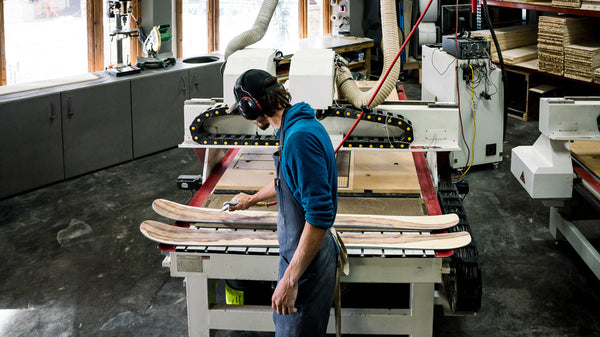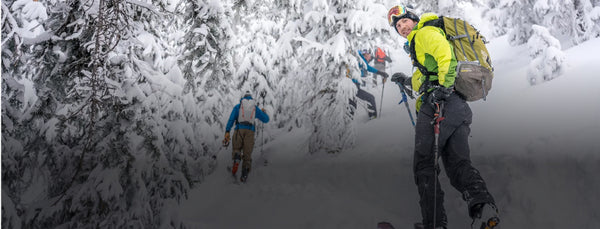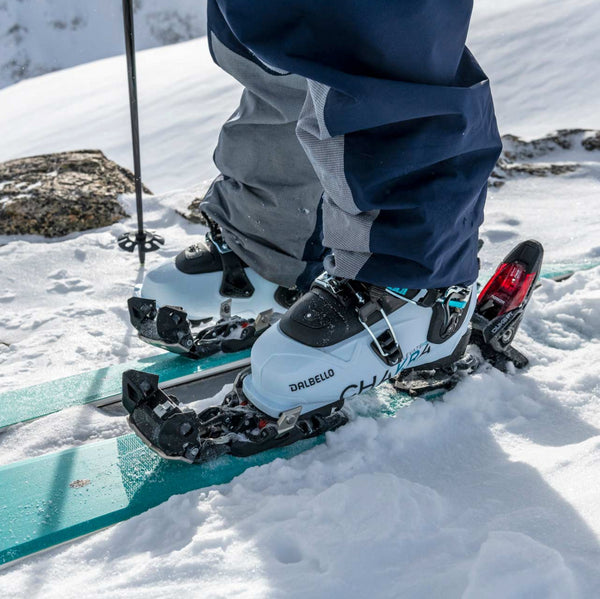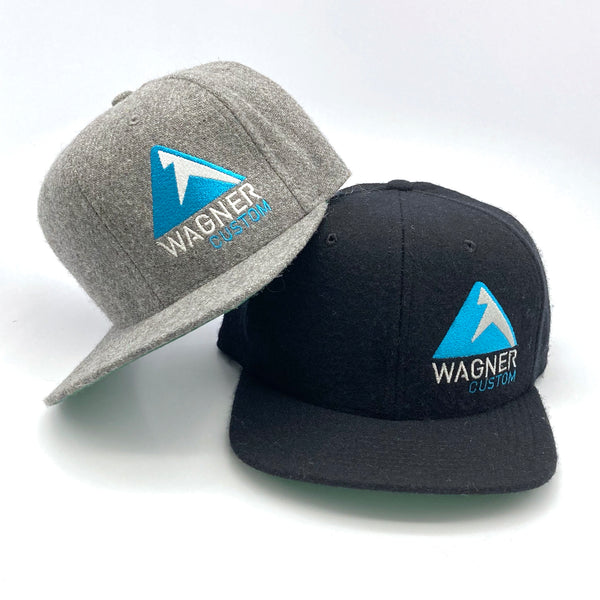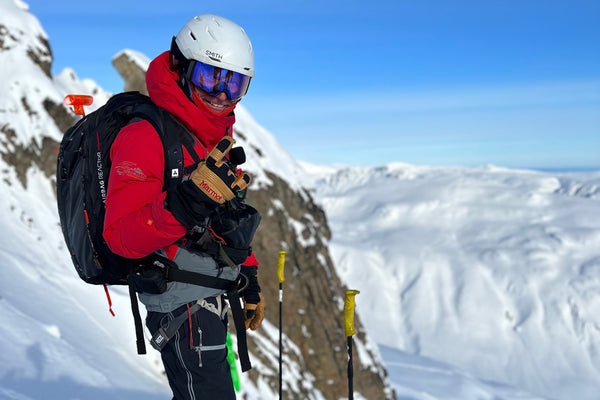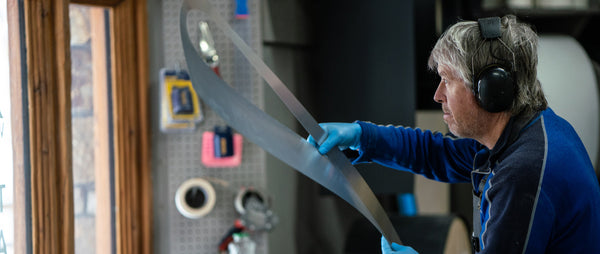
Artist Series 2023: Jack Plantz
Jack Plantz is one of those people who makes you realize you don’t really know anything about anything. Not because he’s arrogant—he’s the opposite of that—but because when you ask him a question about his art, his mind bounces from how light refracts to how coral reefs form to how fluids flow.
Plantz, 25, is an artist, designer, and mechanical engineer—as well as a passionate climber and skier—which goes a long way in explaining how his mind works. A Telluride native, he first started working with Wagner when he won a ski-design contest in high school. Now, when he’s not on climbing adventures across the globe, he works for Wagner as a graphics designer and part-time engineer.
Plantz’s first set of ski graphics hits the presses this week, and we caught up with him in the Wagner shop in Mountain Village to ask him all about them—and everything else. Here’s what he had to say.

Jack Plantz stands in front of El Capitan holding one of the images that inspired his line of ski designs.
Wagner: On the surface, engineering and art feel like very different disciplines.
Plantz: It’s funny because I feel like they shouldn’t be that different. In any kind of creative field, you have to know the technical details of how to do it. Whether that’s traditional art like drawing and painting, you need to know about your paints and pencils. In engineering, a lot of it is creative work, but there is also a lot of math involved. You have to crank out a lot of numbers to make that creative vision happen. I like doing both, but I think I like being more on the design side. I have more fun doing that.
Wagner: What role does beauty play when you’re making functional things?
Plantz: As a person, you can interact with something that is functional, but if it’s laid out badly, you’ll hate using it. That’s a lot of what human-centered design is about—designing something from the perspective of the person who’s going to have it in their hand. That said, not all things are like that. If you design a piece of industrial machinery, it doesn’t need to be beautiful. But then again, if it is, it will probably run better because people will want to know how to use it.
Ama Dablam by Jack Plantz.
Wagner: When you’re combining art and engineering and using all this math, do you find Occam’s Razor to be true—that the simplest solution is always the best?
Plantz: Sometimes. But others it’s just not. Sometimes it’s really complicated.
Wagner: Tell me about the graphics of these skis. They’re named after mountains you’ve climbed?
Plantz: While I was studying in school, we had to make 3-D renders of things, and one of the settings you can use is glass. The software will model light rays through the glass and simulate how they bend and curve so you get an accurate picture of what it would look like if the object were made of glass. So I picked mountains I loved and made renders of them.
Wagner: How did you choose the colors?
Plantz: The color palette is CMYK—cyan, magenta, yellow, and “K” is black, I don’t know why. You use that in printing a lot. They’re primary colors, but slightly off of the classic red-yellow-blue. It looks a little different, which I liked.
Cerro Torre by Jack Plantz
Wagner: Do you have other artistic endeavors?
Plantz: I have a lot of ideas about design and sculptural forms. I also like to paint and draw, I have a sketch book, but most of the art I like has a big technical component. I like to use computers to realize an artistic idea. I made some light fixtures that were hanging in the Telluride Arts Transfer Warehouse recently. They were 3-D printed from a code that simulated the growth of coral reefs. Every one of them was unique.
I wanted to capture the idea that living things have competing goals they’re trying to achieve—coral reef is trying to grow outward and maximize its resources with surface area, but at the same time it’s competing with itself for space. So it has a high surface area and low physical footprint. So instead of modeling the shape we see, I wanted to model the forces that act on it. I was interested more in the reason it’s shaped like it is.
Denali by Jack Plantz.
Wagner: What is it about being outdoors inspires you?
Plantz: Part of why I like being in the mountains and especially climbing is that it makes you realize you’re a very tiny piece of this massive world. But very tiny details really matter. The diff between something being easily climbable and impossible is millimeters of rock. That level of detail in all that vastness inspires me.
Wagner: You’ve studied a lot of different things—do you feel like the more you learn, the less you know?
Plantz: One of my favorite classes was fluid mechanics. We know how fluids behave, but no one’s actually solved the equation. It’s so complex, and yet we can model it well enough that we can build a 747 airplane and it works. It’s both humbling and encouraging. We as humans are able to do a lot, but there are still limits. The world is so complex that we can’t even come close to understanding it.
Matterhorn by Jack Plantz
Wagner: Who are some of the other artists that inspire you?
Plantz: Felipe Pantone is a graffiti and street artist. He has this signature chromatic scale color scheme, and I really like the huge variety of things that he puts his art on. I also follow @realfunwow on Instagram, who’s kind of like a tattoo artist. These skis were also inspired by this guy named Kip Omolade, who will take a cast of someone’s face and paint it chrome so it’s really reflective. Then he’ll take a picture of it and paint all the reflections it makes.
--
Article by Kimberly Beekman
Kimberly Beekman is the former editor-in-chief of the late, great Skiing Magazine (RIP), and a longtime editor of SKI Magazine before that. She currently uses the title of “freelancer” as a beard to ski powder all over the world. She lives in Steamboat, Colorado, with her wonderful daughter and terrible cat.

